YuanLey YS25-0402 Management
This is an unmanaged switch. We could not find a management interface. For a switch in this price range, perhaps that is exactly what folks want.
YuanLey YS25-0402 Performance
In terms of performance, this seems to be a decent, but not top-tier performer.
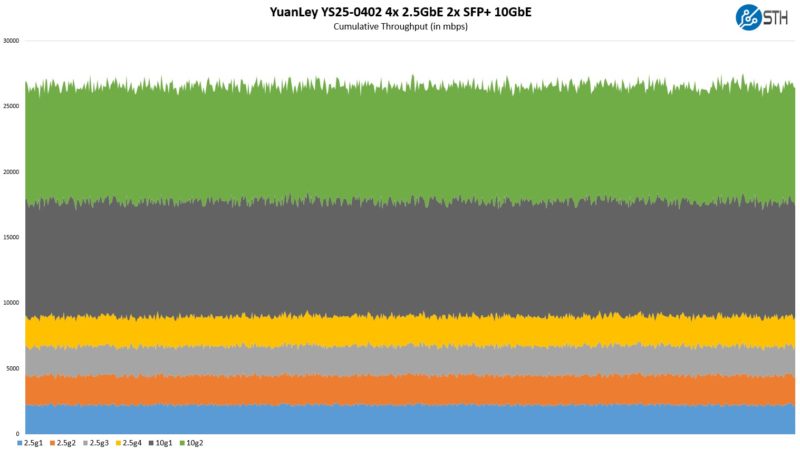
At the same time, we spent less than $70 on this switch and it uses very little power so we would probably consider this more than adequate given the market.
YuanLey YS25-0402 Power Consumption
Power adapters are always an interesting point. This comes with a few markings but we do not see things like UL or FCC markings. It is only a 12V 1A power adapter, so we know this is going to be a low power device.
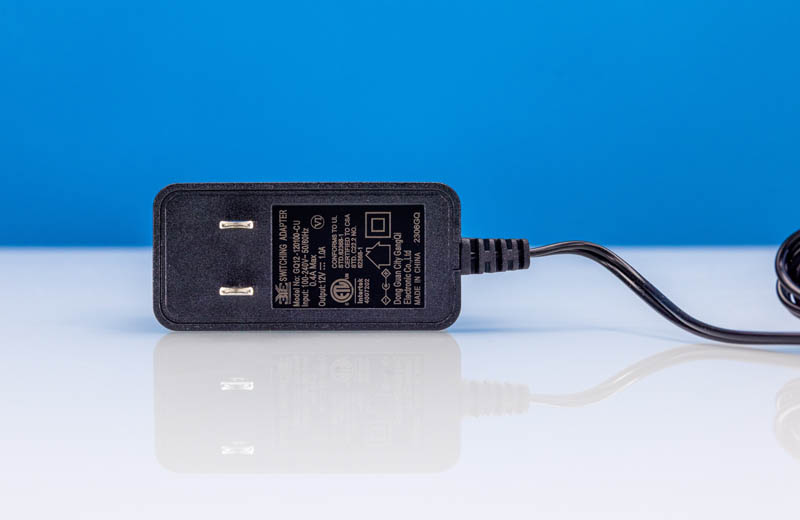
At idle, we got around 1.6W.
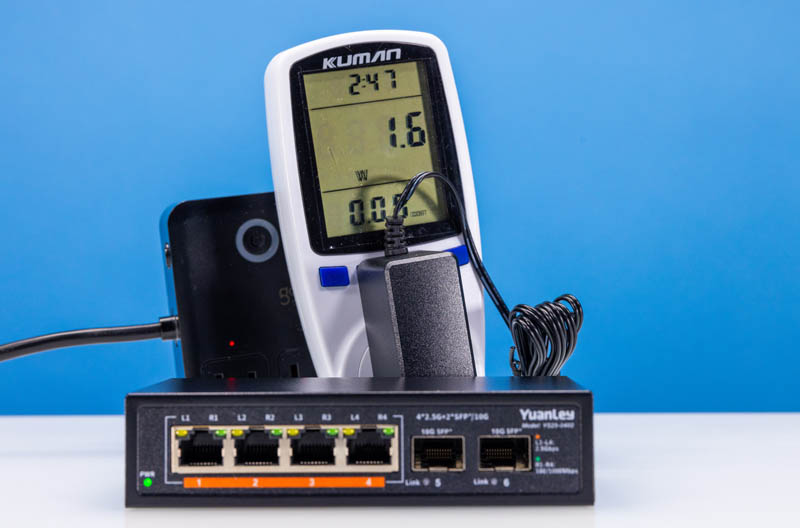
With a single 2.5GbE port plugged in we added 0.7W for 2.3W total.
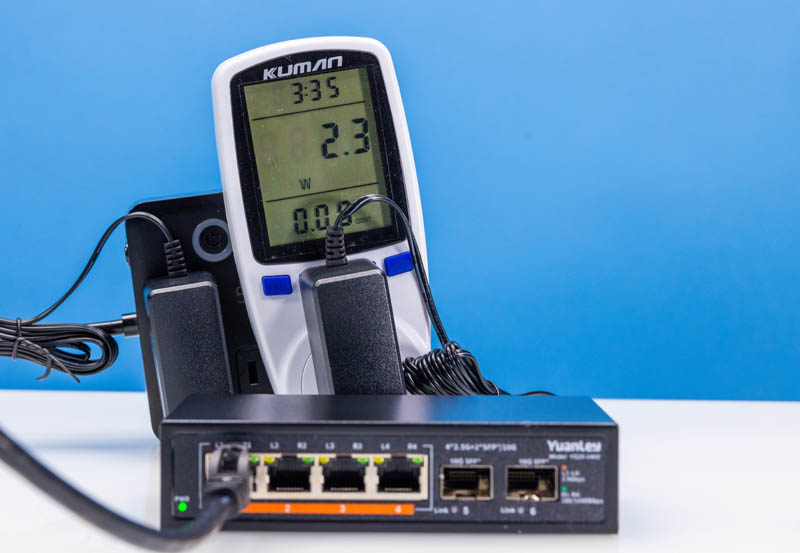
We used a 10Gbase-T SFP+ pluggable to add a good amount of power consumption in a SFP+ port and we got 3.0W for 1.4W over our baseline.
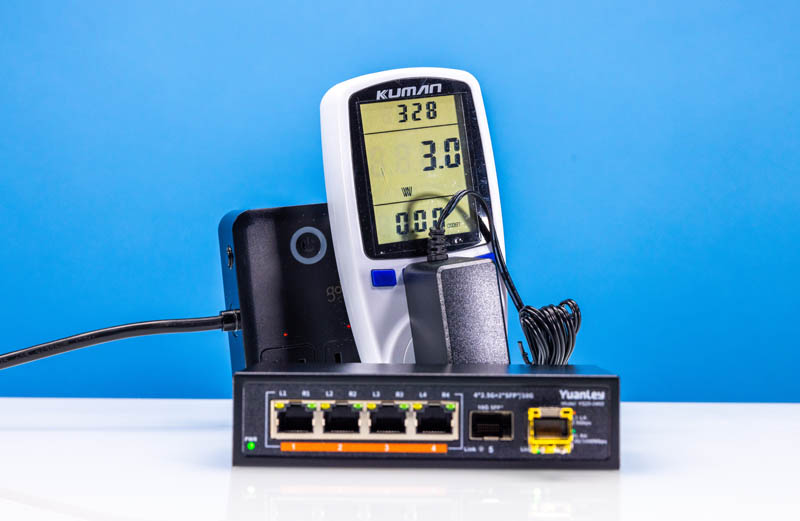
Overall, this is a low-power device. One fun thing we tried was powering this over PoE using a splitter, and it worked. While this does not have PoE-in, a cheap splitter got us the power we needed to the switch just given it is such a low-power device. Perhaps that is not the best idea, but it worked.
Final Words
Let us get to some challenges to something like this. Unlike some Netgear models, there is not a lifetime warranty. Realistically, this is likely more a self-warranty item so if it fails, we would plan to buy a new one. Also, there are no UL markings or others on this device, so some environments will not be able to deploy it just based on that. This is also the kind of device where you have to expect to find something funky like the power adapter failing over time or what have you. It is not something we would install in a bank or in our hosting cluster. On the other hand, sometimes you just need a quick way to get more ports in a room, and this works for that.
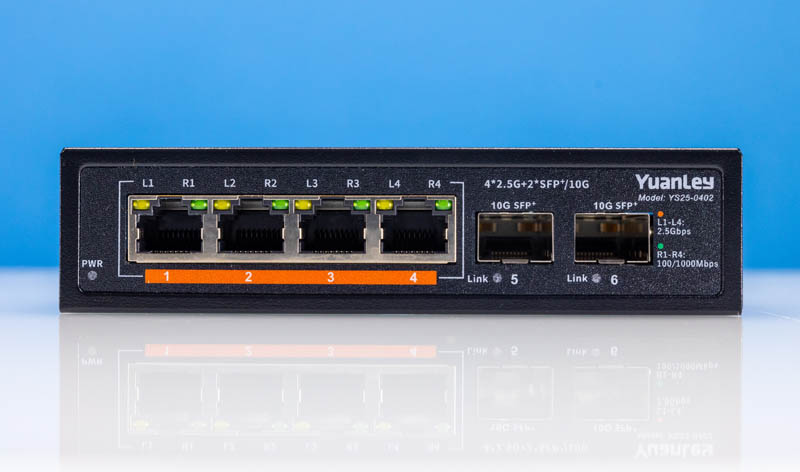
On the other hand, this is fanless, has 2.5GbE and 10GbE ports, and an Intel NUC makes this look petite in comparison. For under $70 (depending on the day and discounts) this is a pretty useful network switch that can easily handle basic networking duties for a very low cost and without any noise.
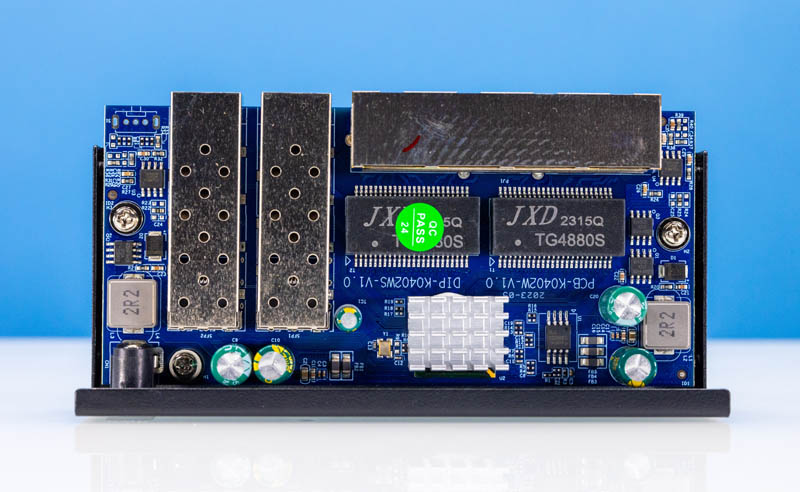
Overall, this is one of those switches that is going to end up in our team’s toolbelt just to have as part of a quick office setup kit. I know our Editor-in-Chief Patrick bought a few of these for the upcoming move to Scottsdale since moving often requires a temporary network to be built. I also now have a few of the Davuaz versions as well as the slightly different Sodola switches that are in the accompanying video and in our web Buyer’s Guide.
Where to Buy
We purchased our unit on Amazon. Here is the affiliate link for this model.
Ultimate Fanless 2.5GbE Switch Buyer’s Guide
You may have seen that we published the Ultimate Cheap Fanless 2.5GbE Switch Buyer’s Guide. Here is the video for that one where this switch appeared.
We decided to do the round-up first and will be filling in with reviews that we had not published at that point, including this one. We are trying to keep everything in a single resource for folks there.




Hi
What security checks is executed to investigate the software on all these cheap Chinese switches.
Do the communicate with any external servers, have the software been checked so something don’t lay dormant?
Erlend – Unmanaged Switches don’t pick up an IP – no IP, no routing..it’d be extemely easy to monitor.
@EViL3 Don’t forget that remote management devices (DRAC, AMT/vPro, etc.) can piggyback onto the host’s IP without the host knowing about it, so it’s quite feasible that an unmanaged switch could inspect packets and if it finds public IP traffic going to and from a private IP, it could use the same mechanism to piggyback its own traffic onto that private IP to ensure it gets routed/NATed to gain Internet access. It could be quite difficult to detect because those packets would be mixed up in a host’s normal Internet traffic, and if the injected packets went to a remote endpoint hosted by a popular provider like AWS, it could very well be indistinguishable from legitimate web traffic.
Or a gigantic dormant botnet.
And it’s not hard to capture traffic even if it says on paper that they are unmanned and don’t support routing.
Sigh… The website lost a much longer reply I was just about to send, but basically:
1. This switch is nowhere near powerful enough to do high speed packet filtering to pick out interesting traffic.
2. Forwarding everything would sature most people’s internet connection, or likely far exceed it (if we are talking places like the US).
3. It would have a hard time bypassing the firewall and/or NAT if it tried to generate its own traffic.
3. It would be far easier and cheaper to just build a bot that automatically compromises vulnerable IoT devices in order to build a botnet, if that’s what “they” are after.
Basically, these are just based on reference designs from Realtek as far as I can tell.
I have the 8+1 model. (8×2.5Gb + 1x10GbE) which has the same users manual as the reviewed item. I used an old Cisco/coax SFP+ to hook it up to a 10GbE switch. No issues. Amazon has these for less than a $100 with a 30 day no questions return policy, so go ahead and roll the dice.
60Gbps backplane, so I wouldn’t go looking for massive forwarding rates. It fits a niche very cheaply. IPS isn’t picking up anything. No outbound sessions hiding as something else.
I got this from Amazon in less than 24 hours, so YuanLey’s distributor is clearly stocking it up in the warehouses.
Honestly I am tired of the stupid prices being pushed with 10G ports. You know 10G is getting cheap when VMWare drops support for any brand made in the past 8 years. They knew the wave was coming and ran.
Here is another RTL8372 based switch 2x10g+4×2.5g:
Link on AliExpress
<50$
The ETL (Electrical Testing Laboratories) mark from Intertek on the power adapter is considered equivalent to the UL listing in many jurisdictions (or CSA here in Canada). The C and US on the left and right sides of the marking means that the device is certified to both Canadian and US standards. (Interestingly, ETL traces its history back to Edison!)